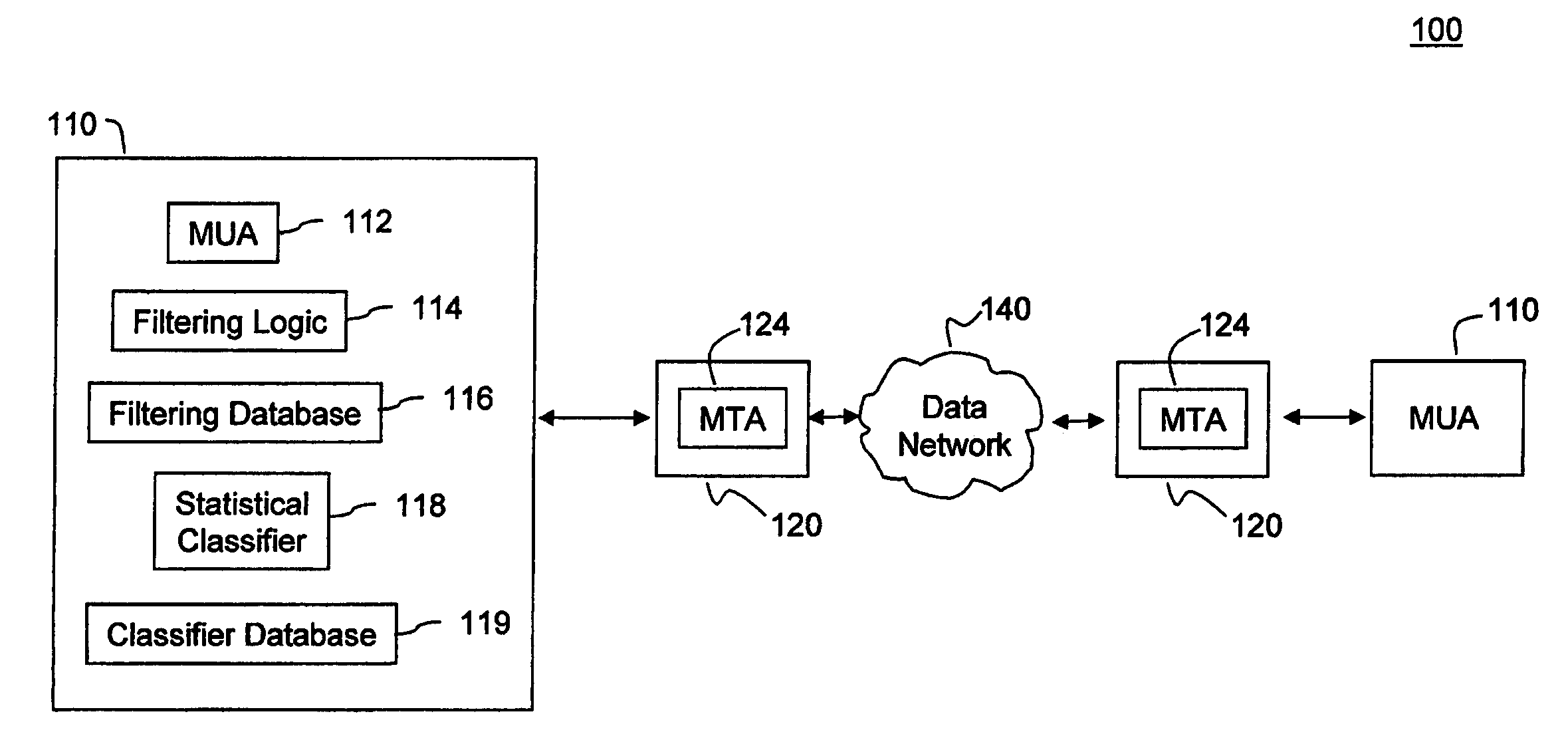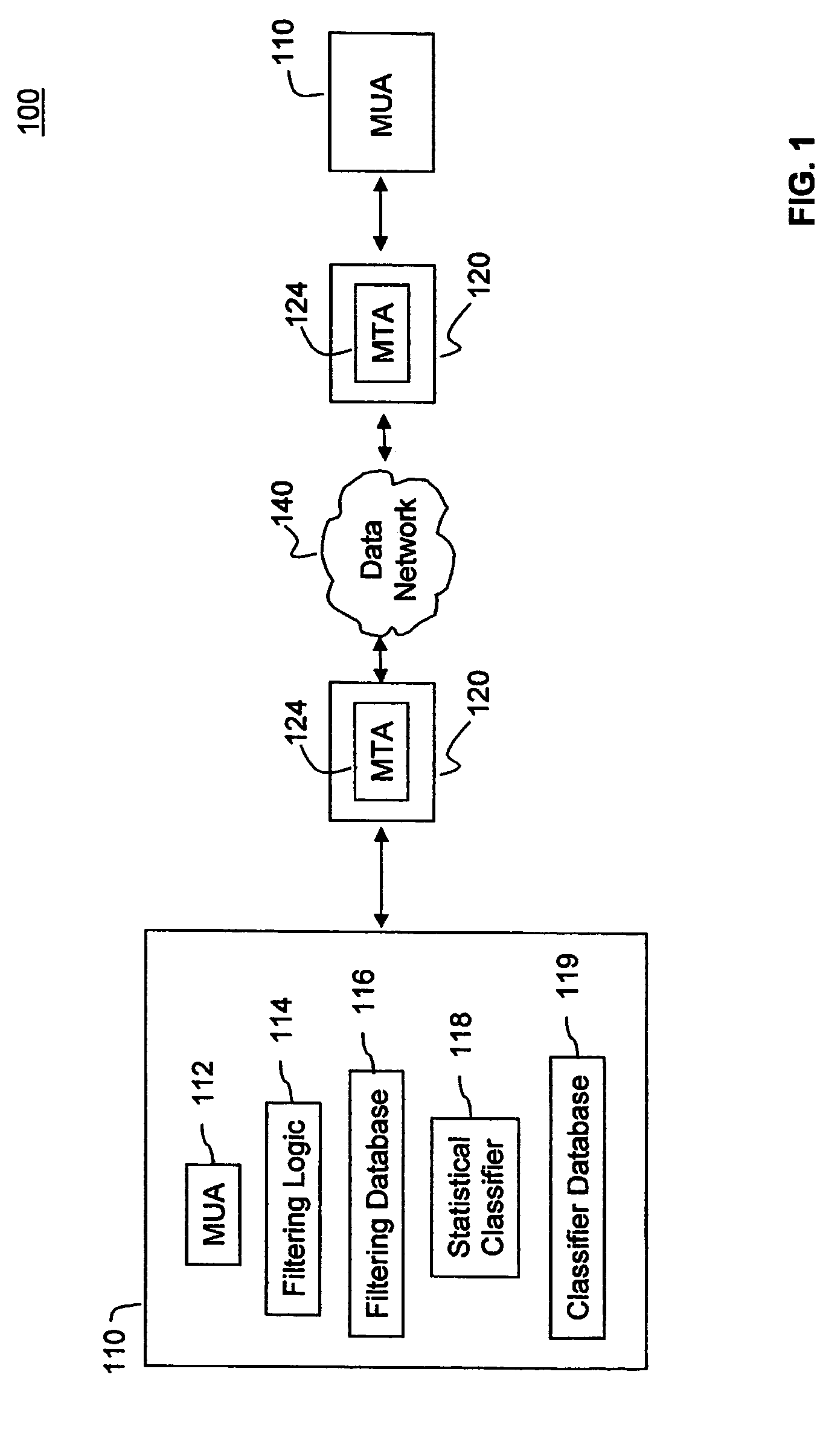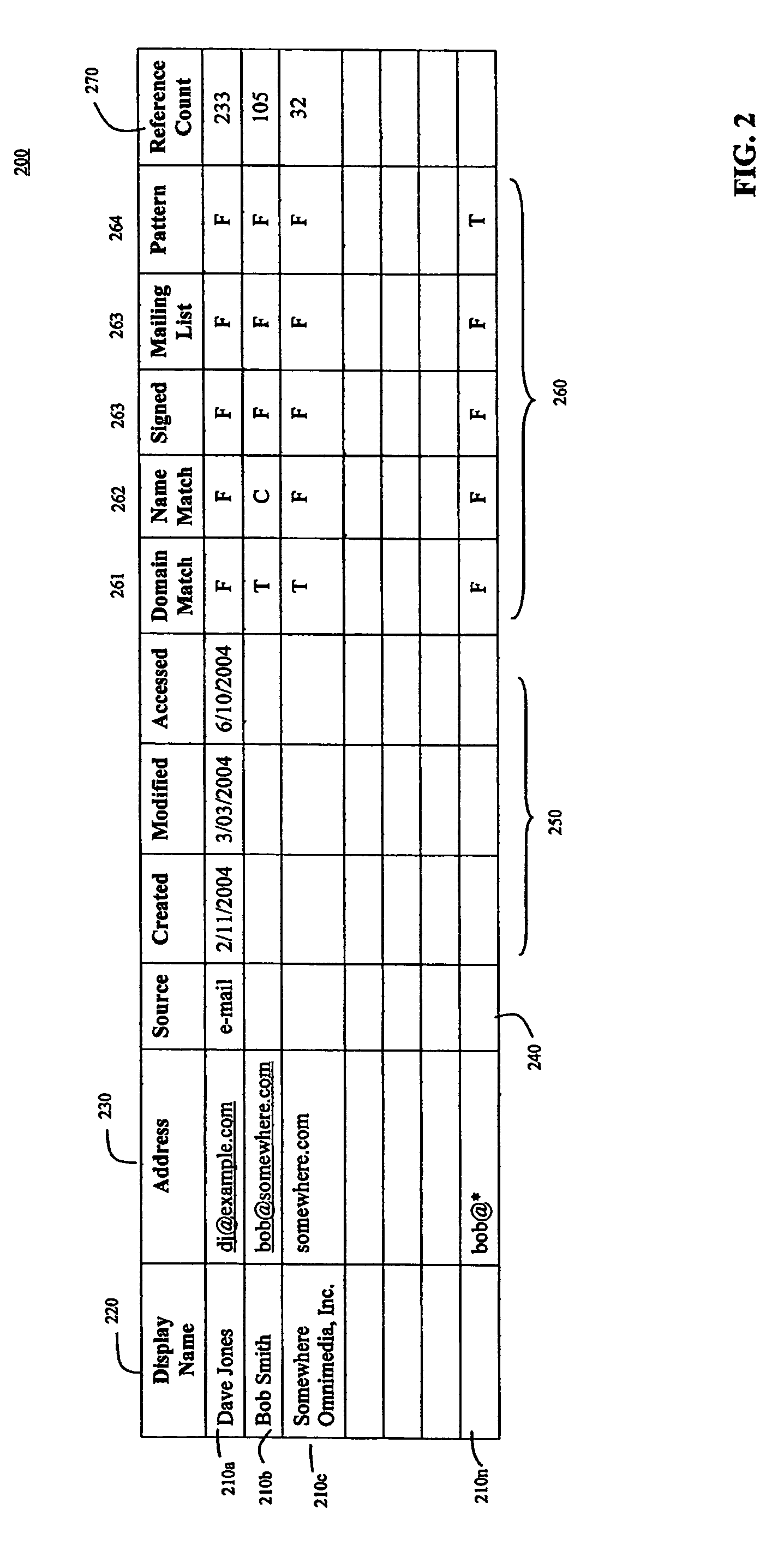System, method, and computer program product for filtering messages and training a classification module
a classification module and message technology, applied in the field of electronic mail communication, can solve the problems of large percentage of unsolicited and unwanted e-mail received, difficult management and use of typical systems for handling and filtering spam and malicious software, and waste users' time and money in productivity and downtim
- Summary
- Abstract
- Description
- Claims
- Application Information
AI Technical Summary
Benefits of technology
Problems solved by technology
Method used
Image
Examples
example 1
[0146]
Return-Path:bob@somewhere.comFrom:Bob Smith To:Alice Smith Subject:Hey there . . .
[0147]In example 2, below, the message is from a hypothetical online stock broker entity, superbroker, to an individual named Bob. In this example, the original sender could be represented by either the relatively simple From address (alerts@superbroker.com) or the more complicated address in the Return-Path header. While the complicated Return-Path header is useful for tracking mail delivery problems, a typical user may not understand the address. Furthermore, a complicated Return-Path address is likely to change with every message, limiting its usefulness in filtering for malicious messages. Therefore, in this case, alerts@superbroker.com is selected as the original sender address.
example 2
[0148]
Return-bob=somewhere.com-932568346@bounces.superbroker.comPath:From:Online Broker To:Bob Trader Subject:AVGO off 20% at opening bell
[0149]Example 3, below, is indicative of the scenario where an individual sends the same message to a large number of recipients (e.g., an individual running for a political office). In example 3, the From address (bob@bob04.org) and the Return-Path address (postmaster@bob04.org) are different. However, unlike example 2, both addresses are reasonable choices to represent the original sender. Both addresses are likely to be the same on every message received so adding either the From address or the Return-Path address to the positive screening list or negative screening list would meet the screening needs of a user. However, the address on the From line is the better choice for the original sender. Because the message is sent to a large number of recipients, the individual originating the message (bob) does not want or need to receive administrativ...
example 3
[0150]
Return-Path:postmaster@bob04.orgFrom:Bob For President To:Loyal Supporters Subject:Get out and vote!
[0151]Example 4, below, is an example of a partial header for a message from an automated process that alerts an individual whenever an event occurs (e.g., whenever the web server he administers goes down). Because there is no From line, the Return-Path address is the only possible choice for the original sender.
PUM
 Login to View More
Login to View More Abstract
Description
Claims
Application Information
 Login to View More
Login to View More - R&D
- Intellectual Property
- Life Sciences
- Materials
- Tech Scout
- Unparalleled Data Quality
- Higher Quality Content
- 60% Fewer Hallucinations
Browse by: Latest US Patents, China's latest patents, Technical Efficacy Thesaurus, Application Domain, Technology Topic, Popular Technical Reports.
© 2025 PatSnap. All rights reserved.Legal|Privacy policy|Modern Slavery Act Transparency Statement|Sitemap|About US| Contact US: help@patsnap.com



